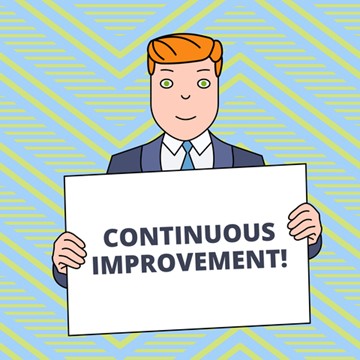by virtualworks | Apr 14, 2024 | Accomplishments, daily lfe, Mastery, Productivity, Time Management
 Who doesn’t have a ‘bad’ day?
Who doesn’t have a ‘bad’ day?
We all do sometimes, and these days it seems like there are a lot of them. A recent bad day was experienced by a friend of mine, let’s call her “R”. Picture this:
After a restless night’s sleep, “R” wakes up with an incredible headache and stumbles along getting ready for the workday ahead. With no hot water left for a shower, a broken hairbrush and tangled necklace (and not one, but two, dropped cups of coffee), she managed to still get herself ready for the day. She realizes what she thought was 8 am, was actually 9 am and she was already running late for work. The rest of the day became a blur of things just not going right. It is safe to say “R” was having a ‘bad’ day.
There are some common causes for a bad day: The list below is not exhaustive of the causes of a bad day, but they are common to many.
- Lack of Sleep (like our friend above): not getting the right amount of sleep can be a contributor to stress and poor health.
- The Presentation of Negative Information: we are bombarded by the news, social media and negative people providing negative information that can be overwhelming.
- On-going issues that last a while: there may be past negative experiences that still have a current impact that needs to be dealt with.
- Upsetting events just happen: things just happen and they will have an effect on your day.
Relativity of Problems:
It’s important to recognize that people come from different places and their lives are based on different events they experience. As a result, we all have different levels of what people consider a problem that causes a bad day and it is important to not discount the struggles of others even if we don’t understand their struggles as a problem.
Tips to get through it: So, let’s try to get through that bad day with the following ideas:
- Take a moment to just breathe. Stop the bad day in its tracks.
- Do some things to make you feel better like taking a relaxing bath, have some tea, go for a walk or meditate.
- Understand the cause of the bad day and determine if these are things within your control. If they are, make the change that is needed and if this is not in your control do your best to let it go.
- Journal those things that are causing your bad day as a way to express your emotions or speak with someone to ask for help.
If you’re interested in trying a few other methods to get through a bad day, check out tinybuddha.com’s article on how to turn around a bad day in 10 minutes.
by virtualworks | Mar 24, 2024 | Accomplishments, Business, business growth, Customer relationships, Leadership, Marketing, Mastery, Productivity
 As the needs and wants of society change, the requirements of many suppliers of goods and services change as well. Changes in technology and the ways to manage them, such as those mentioned in Forbes article on this topic, current issues and other innovations have made it so businesses must be mindful of how these have an impact on their business offerings. So how do you know when it’s time to change or at least time to think about evolving your business?
As the needs and wants of society change, the requirements of many suppliers of goods and services change as well. Changes in technology and the ways to manage them, such as those mentioned in Forbes article on this topic, current issues and other innovations have made it so businesses must be mindful of how these have an impact on their business offerings. So how do you know when it’s time to change or at least time to think about evolving your business?
Consider some of the following indicators as potential flags for a business in need of evolution:
- Current clients have chosen to move to other companies for the goods and services you once provided to them;
2. There doesn’t seem to be any new business coming in;
3. There have been significant changes within your industry;
4. Service gaps discovered while challenging your knowledge and client requests.
Current clients bring in revenue for your business, so as business owners we do all we can to ensure they are happy with the service and deliverables received. Some of the more common reasons for losing clients are either they are unhappy with the service received, the product delivered, or how much that product costs, but in many cases, businesses have worked hard to deliver a quality product, have remained professional and researched prices well enough that they align to the market. At times we hear business owners say, “I did all of that, but they still moved on.” In these cases, it is possible that the client simply didn’t need the product anymore as it is in its current state. Perhaps some enhancements can be made to your current offerings to provide a little more to clients to give you an extra edge over competitors. A few examples can be found in this Entrepreneurship in a Box’s article. It’s fantastic when current clients hang with us but to continue business growth, new customers are also needed. Positive word of mouth from existing customers is one of the best ways to create this organic growth in customer base, but if you need to go out to find them, you need to get out there. Try attending tradeshows, updating your marketing strategy and image and networking through newer types of media.
To manage both the maintenance of current clients and the acquisition of new clients it may be necessary to take a look for gaps in your current offerings. It’s nice to think we’re doing all we can, but perhaps there are areas you can educate yourself on to provide a more complete solution to clients. Maybe you are a bookkeeping wizard, but new accounting software has come out that you’re unfamiliar with, and you have begun to see a client need related to that software. It might be time to evolve and learn the software to fill in that gap to offer that complete bookkeeping solution.
Innovative changes happen constantly and will continue to do so, with or without you.
When your industry starts to change it may not be very noticeable at first but over time you may see your competitors changing and evolving with innovations and there may be a reason for it. When changes in technologies and how a client’s function in their activities happen, suppliers to those clients also need to evolve and innovate. Check into each of your products and services to see if they are all still applicable or if they have grown stale. If you’re wondering how this can be done, check out this interesting Info Entrepreneurs article touching on some of the ways to innovate.
by virtualworks | Mar 3, 2024 | Accomplishments, Business, business growth, daily lfe, Leadership, Mastery, Productivity
 Whether in business or in our personal lives, we’re constantly striving to find something, to do something, or to complete something leading to an achievement or accomplishment and we measure how successful we are against the ability to reach these goals. Many times, we’re so busy looking ahead to how we can achieve these goals, we often forget to reflect on what we’ve already done and we may only be recognizing professional achievement and not the day to day ‘stuff’ that this wide ride called life can throw at us.
Whether in business or in our personal lives, we’re constantly striving to find something, to do something, or to complete something leading to an achievement or accomplishment and we measure how successful we are against the ability to reach these goals. Many times, we’re so busy looking ahead to how we can achieve these goals, we often forget to reflect on what we’ve already done and we may only be recognizing professional achievement and not the day to day ‘stuff’ that this wide ride called life can throw at us.
A colleague told me a story of how one of her friends was completely down on himself, feeling like he hadn’t accomplished anything. While he admitted this was an extreme way of thinking, to not have accomplished ANYTHING, he couldn’t shake the feeling that he had not yet done anything with his life, as he was in his mid-thirties, had never been able to buy his own home and did not have a solid career nailed down, nor did he have any idea what his career was. However, he had been married for 15 years, with three almost grown, respectful children and he took care of his parents and grandmother when he could. She pointed out what he had already accomplished but this didn’t resonate as actual accomplishments to him. But why?
When we fail to recognize what we’ve done in our lives as a whole, we may be denying ourselves that feeling of accomplishment, which gives us that little motivation boost to go further to achieve the goals we set out to do.
It comes down to how we measure success, and we all do it differently. These differences can stem from our upbringing, our personal and professional experience, our current societal norms, numerous other factors, but one thing remains: for the most part, we want to be successful and we each have a measure in our mind of what this is. Forbes magazine has given an indication of how one should measure success, and that all starts with YOU, in terms of what success represents, how it is measured in your state of mind, and that it is for YOU to measure an no one else. So the first question is: How do YOU measure success?
Success comes in many forms, small to large, professional and personal and it’s a good idea to know where you are at with respect to your own larger goals, because each little step further towards and overarching goal is an accomplishment in and of itself. If I said I want to be a psychologist so I can help people, this is a very broad and very big goal. The chance that I may not accomplish this larger goal is fairly likely, but that should not be a deterrent for trying or enjoying the path to get there. Each course passed towards a psychology degree, each article read and understood and each opportunity to rest and let the information connect is its own accomplishment.
So, why not celebrate what you have managed to do, to provide the fuel to your motivational fire?? If you’re still focused on those larger goals, Psychology Today as a short article on steps to achieving those goals and remember to enjoy the road to get there! So, take it easy on yourself, give yourself a pat on the back for what you’ve been able to do and you will move on to do more.
I’ve successfully written this short article.
Now it’s your turn to do something amazing!
by virtualworks | Jan 2, 2023 | Accomplishments, business growth, daily lfe, holiday, Leadership, Mastery, office management, Team Work, Time Management, working from home, working remotely
 These last few weeks can be labelled as busy, chaotic, and exhausting and I’m not even talking about work! I’m talking about the holiday time off that just passed! While I am glad to be back at work, it’ s tough to get back into the routine again. On that note, I hope you have all had a wonderful, stress-free holiday. For those that are perhaps not feeling the back to work grind, I offer the information below.
These last few weeks can be labelled as busy, chaotic, and exhausting and I’m not even talking about work! I’m talking about the holiday time off that just passed! While I am glad to be back at work, it’ s tough to get back into the routine again. On that note, I hope you have all had a wonderful, stress-free holiday. For those that are perhaps not feeling the back to work grind, I offer the information below.
Whether you had a relaxing time off, or you still need a vacation from your vacation, the transition back to the day-to-day routine of work, without the distraction, food and fun of the holidays is no easy task. So, first thing’s first: don’t be too hard on yourself, we’re all a little rusty getting back into the swing of things.
At times people may experience depression, the “winter blues” and anxiety. With winter settling in and the excitement of the holidays over, we push ourselves back to work and may not always recognize when it is time to take care of ourselves.
Don’t forget if you do need help right away the Canadian Mental Health Association has resources available.
A couple of years ago CBC posted an article on the anxiety of returning to work after the holidays and what you can do to manage it.
The signs of the “Winter Blahs” can include:
- Lack of motivation and loss of interest;
- Low energy;
- Difficulty sleeping; and
- Difficulty concentrating
However, there are a few ways to manage this form of depression that tends to linger during the winter months, so why not give some of these a try!
- LIGHT THERAPY:Use of an artificial light source, as light therapy to create the sunlight you would otherwise get during the summer months.
- SMALL ACCOMPLISHMENTS:Boost your motivation by completing small manageable tasks, recognizing each task as an accomplishment and step to a larger goal.
- HEALTHY EATING:Foods that contain the minerals and nutrients to get you through your day not only impact your physical health but can also be beneficial to mental health.
- STAY ACTIVE: (my personal favourite) Being active for 30 minutes per day is known to provide a fantastic boost of energy, confidence and provide an overall improvement to one’s mental and physical well being.
- EMBRACE THE COLD:As the winter is tucking itself in for a little while, there is no getting away from it and we may as well embrace it by getting out there and enjoying what it has to offer, such as skiing, snowshoeing, skating and even bundling up for that walk on your own or bring a friend.
So, what about getting used to that routine again? Even if you aren’t feeling the blues, maybe you are feeling the difficulty of getting back to the routine, so give a try with:
- Don’t set yourself up for negativity! – “Be the positive change you need.” I know it sounds a little strange, but taking a positive attitude to go back to work can be an excellent start to going back to work.
- Be ready for the pile of work and chunk it out into steps – sure you have been away from the office for a little while, so you might want to anticipate the pile of work that may be waiting for you.
Slow and steady wins the race:
- Step 1: Make that coffee have a seat
- Step 2: Make a list of the things that need to be completed
- Step 3: Then chip away at it, one thing at a time
- Be patient with yourself.
Bring something to work or do something nice for yourself and ease back into it. Remember it is a new year, so this can be a fresh start to fantastic things to look ahead and look forward to.
You can do it! Wishing you everything wonderful for 2023 from Barbara B. and the team at VWI.
by virtualworks | Feb 13, 2022 | Accomplishments, business growth, Leadership, Mastery, Productivity, Team Work, Time Management
Many organizations start with a great idea that will change the world and, through time and effort, they will evolve to be the best in their field. Though you might not think of it these terms, but what they’re doing, what they’re actually reaching for, is “mastery”.
You know this, because you have steered your non-profit through adversity and success, put in the hours of work, training, research, and sweat to make a difference. I don’t have to tell you that becoming the ‘master of business’ requires hard work. Malcom Gladwell would tell you that it takes 10,000 hours of “deliberate practice” to master a skill.
Imagine watching the best Formula One driver, or the most incredible ballerina. They make their chosen trade look so easy and accessible. It is only when you attempt to duplicate the complex beauty of the Dance of Sugar Plum Fairy (reported to be one of the most difficult roles to dance) or harness 1000 horsepower around a turn pulling 3 G’s in a Formula-1 car, you realize that just because something looks easy doesn’t mean it is.
And that may be true for something like ballet or the violin where the skill is quantifiable. Becoming a master of your non-profit or association is much more than “time in” on any endeavour.
As I look around there are any number of organizations providing services to their members, value to their donors, exposure to their sponsors in any number of ways. What separates the successful from those who have become a master at their industry is a gritty combination of discipline, hard work, humility and generosity. Most of us would agree with the first three, but generosity?
There’s an old adage, “if you want to learn something well, teach it to someone else”. In order to teach well, it requires that you face your presuppositions about things, unearth those ideas that you didn’t even realize you believe. Being the master of any subject (even one that you invented) requires you to be able to objectively look at whatever you’re doing and seeing ways it can be improved. To teach someone else what you know requires a certain generosity. After so many years of ‘doing you’, that can be difficult, but that generosity has the reward of unearthing flaws in your system in order to improve them, and you cannot master what you think is perfect.
Now expanding on the generosity of teaching and of talent development, you gain the opportunity to:
- Invest: You are investing time leading to growth as an organization and investing in another person. How great is that?! Can you imagine if Bill Gates just did it all himself without bringing in a team? Bringing in others to be a part of your team grows your organization and its mandate.
2. Discover Improvements: By letting others in on your system of doing things and teaching them how to do what you do they may discover and share new ideas and improvements you had not initially thought of. (another ‘set of eyes’ is always a good thing)
3. Trust and Grow: By trusting your team to deliver, instead of always just yourself, you free up time to do more and expand.
So while you’re changing the world, be generous, develop your talent base and grow!






Recent Comments